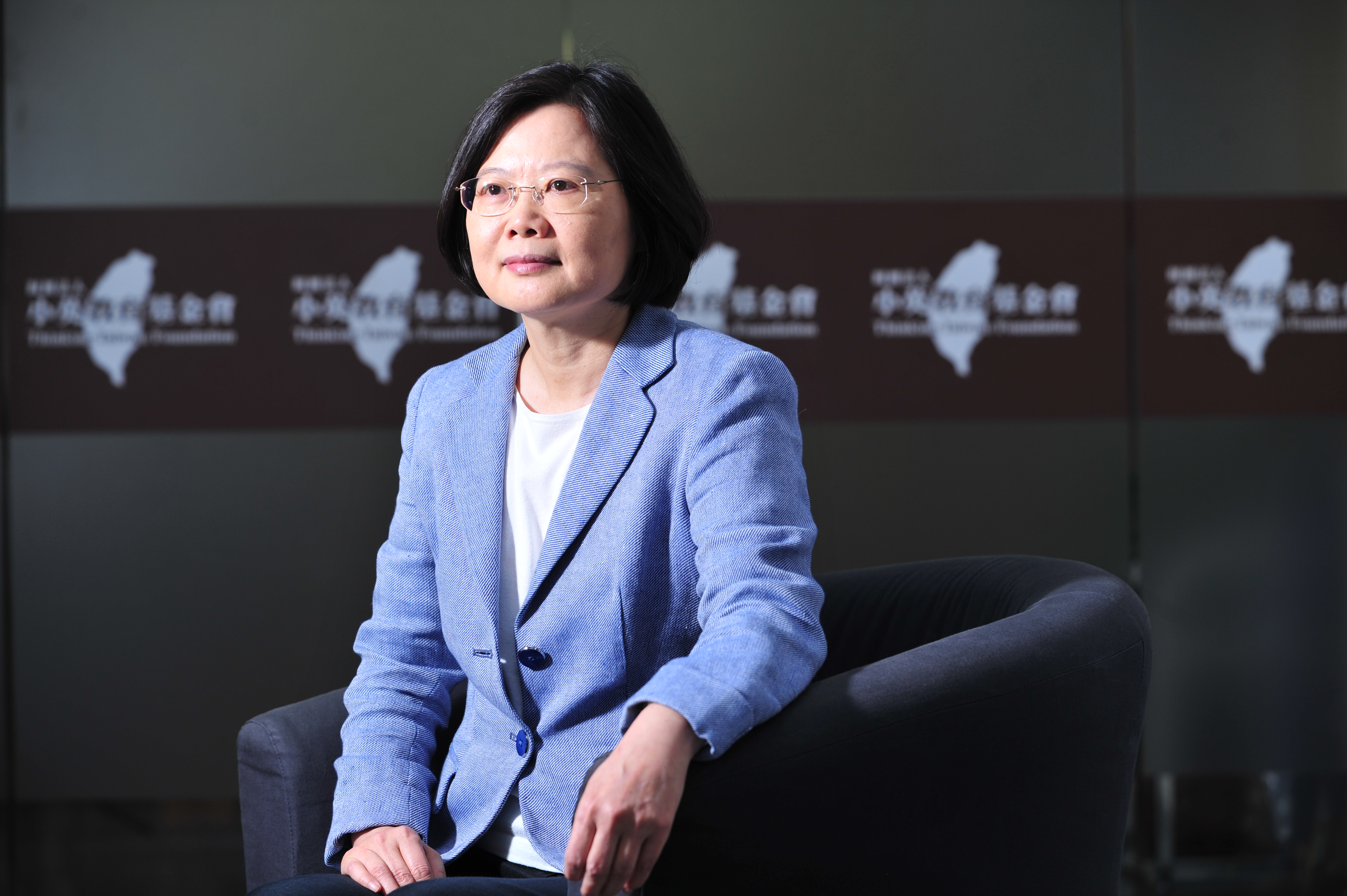Taiwan needs cooperation with the Pacific Islands

Source:shutterstock
Taiwan has been actively seeking opportunities to join regional integration schemes and bilateral cooperation with Pacific Island countries. What can be done to promote economic cooperation, conduct people-to-people exchanges, enhance resource sharing, and forge regional links?
Views
Taiwan needs cooperation with the Pacific Islands
By Kuan-ting Chenweb only
The arrival of the official delegation from the Marshall Islands, led by the Micronesian nation’s president David Kabua, sends a strong signal that President Tsai Ing-wen’s (蔡英文) administration is not only investing in deepening and broadening informal partnerships with the United States, the European Union, Japan, and the New Southbound Policy target countries, but also upholds positive relations with the Republic of China’s formal diplomatic allies.
Pacific Islands countries (PICs) constitute key players in the Indo-Pacific—a dynamic which is clearly visible in the strategies for the Indo-Pacific put forward by the US, the EU, and France.
As Taiwan is actively seeking opportunities to join regional integration schemes such as the Comprehensive and Progressive Agreement for Trans-Pacific Partnership (CPTPP) and hopes to become a part of a new Indo-Pacific economic framework that the Biden administration is developing, our nation’s government is well-advised to till its friendships the Marshall Islands, Nauru, Palau, and Tuvalu. Simultaneously, the current format for engagement between Taipei and the capitals of the PICs is largely constrained to bilateral cooperation. Consequently, I argue that our nation’s diplomats should devise strategies for multilateral projects engaging our Pacific partners, and consider including these states within the framework of the soon-to-be-revised New Southbound Policy.
One of the key accomplishments of Kabua’s visit to Taiwan has been the renewal of an agreement on agricultural technical cooperation. With its first agrarian development mission deployed to the Republic of Vietnam in 1959, Taiwan now boasts of great prowess in operating international cooperation projects aimed at capacity building and soft infrastructure development. Specifically within the context of the Marshall Islands, Taiwan has productively married its technological aptitude with experience in buttressing local agricultural projects, and successfully launched an initiative to “enhance livelihood through smart agriculture,” producing positive externalities related to economic development and public health.
 (Source:shutterstock)
(Source:shutterstock)
However, such local interventions can only have limited impact on broader systemic issues which hinder economic integration and development of the PICs. Pacific Islands face considerable challenges to raising their economic competitiveness in the capitalist world system, given their modest size, small population, poor industrial infrastructure, and lack of natural resources. Remoteness also constitutes a major obstacle, as many PICs are located too far from major markets to participate fully in the global economy.
Consequently, Taiwan, and its International Cooperation and Development Fund (ICDF) in particular, ought to look to the transport sector as a key area for future cooperation projects in the Pacific. Given the sheer physical distance between the islands and key economies, PICs continue to suffer from the perceived limitations to local market opportunities and few comparative advantages. This has deterred investment and produced missed opportunities for economic growth and improved livelihoods.
The underappreciated potential of Taiwan as a facilitator of expansion of logistical links between PICs and East and South-East Asia is hardly a new concern. In an April 2020 report, Yeh Chang-Chen (葉長城), Research Fellow at Taiwan WTO & RTA Center, Chung-Hua Institution for Economic Research, asserted that strengthening inter- and intraregional transportation and information and communication links should be considered key areas of engagement.
Technical assistance to build up a comprehensive and coherent transport sector policy across the PICs, including know-how, expansion of logistics infrastructure, and provision of transparent maritime transport subsidies with clearly defined fiscal commitments, would be mutually beneficial.
On the one hand, Taiwan could use these tools to meaningfully address the pronounced need to increase connectivity across the region, and to ensure the resilience of hard and soft infrastructure. On the other hand, this strategy would open up new markets to Taiwanese entrepreneurs.
While the current infrastructural limitations often render business with PICs markets unviable, we should not lose sight of commercial opportunities awaiting in the region. In particular, economic reports of the Asian Development Bank and the US government consistently point to opportunities in the renewable energy sector.
It is worth pointing out that Taiwan’s ICDF has recently concluded a project supporting household energy efficiency and home solar system development in the Marshall Islands, while Taipei and Majuro are also to set up a joint fund to combat the effects of climate change. Consequently, these untapped commercial opportunities should be viewed as another step in the scale-up of existing partnerships, rather than entirely new ventures.

As an active and productive contributor to the global system, Taiwan remains committed to upholding the principles of economic freedom. It is no coincidence that our country ranked sixth in The Heritage Foundation’s 2022 Index of Economic Freedom.
Yet, we should shy away from reductionist understanding of economic freedom as merely the lack of excessive government intervention. Isaiah Berlin instructed us about the distinct concepts of negative and positive liberty. In the context of international economic relations between partners of disparate standing within the capitalist world system, positive economic freedom frequently needs to take precedence. To have “opportunities for action,” and pursue self-realization and self-determination, it becomes imperative to embrace enabling means, or tools of positive freedom, materialized in undertakings such as meaningful build up of logistics infrastructure and transportation subsidies.
In tandem with multilateral cooperation aimed at increasing transportation links with and between PICs, incorporation of these countries in the New Southbound Policy could provide a solid framework for further incorporation of their economies in regional supply chains.
The NSP, which is President Tsai’s flagship policy initiative aimed at diversifying Taiwan’s foreign and economic relations, rests on four key pillars which correspond to broad aims for expanding people-to-people and economic ties. These include promoting economic cooperation, conducting people-to-people exchanges, enhancing resource sharing, and forging regional links.
These objectives exhibit a high degree of synergy with the rationale behind development cooperation projects implemented by Taiwan in the PICs. Consequently, as the administration prepares to publish a revised version of the NSP, six years after its original avatar was unveiled, the time is ripe to recognize that PICs are pivotal players in the Indo-Pacific framework and deserve a meaningful inclusion in this flagship initiative. Additionally, the incorporation of cooperation with the PICs under the umbrella of the NSP would allow for productive exchange for best practices for development cooperation and economic integration, while simultaneously strengthening the administrative efficiency of the government's inter-departmental international cooperation plans and practices.
Last year’s visit of the Palauan President Surangel Whipps Jr. and the ongoing delegation of President David Kabua from the Marshall Islands sent a timely and important message about Taiwan’s steadfastness in its engagement with the Pacific Island allies. At the same time, amid the consolidation of the geopolitical concept of Indo-Pacific cooperation, it is important that Taiwan fully realizes the untapped potential of multilateral cooperation with its Pacific partners.
Connectivity and regional integration stand as pivotal areas where current initiatives could, and indeed should, be scaled up.
(This piece reflects the author's opinion, and does not represent the opinion of CommonWealth Magazine.)
About the Author:

Kuan-Ting Chen 陳冠廷 serves as the Chief Executive Officer at the Taiwan NextGen Foundation, a Taipei and Chiayi-based think tank.
Have you read?
♦ Leveraging Taiwan’s techplomacy in Europe
♦ What an India-Taiwan FTA entails
Uploaded by Ian Huang






